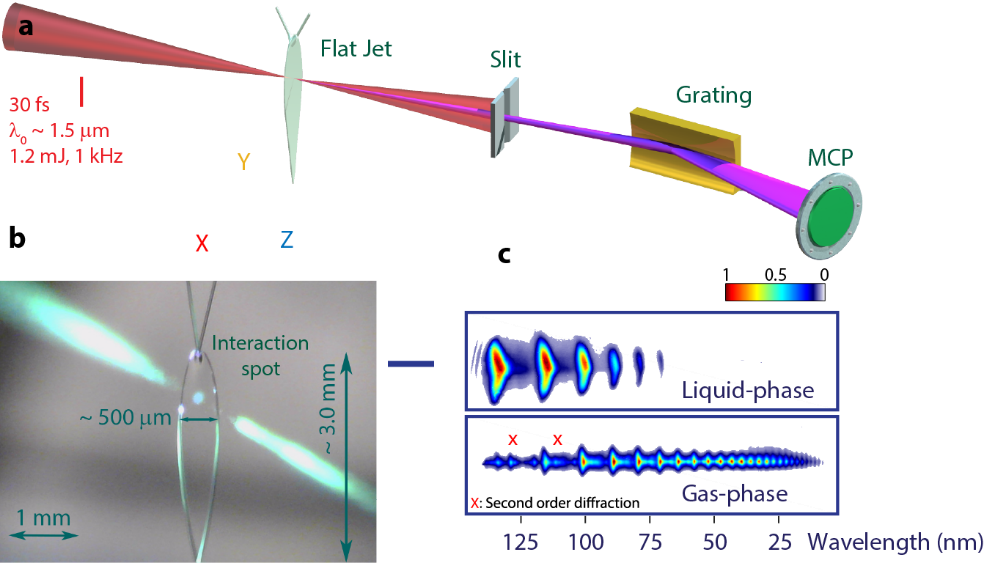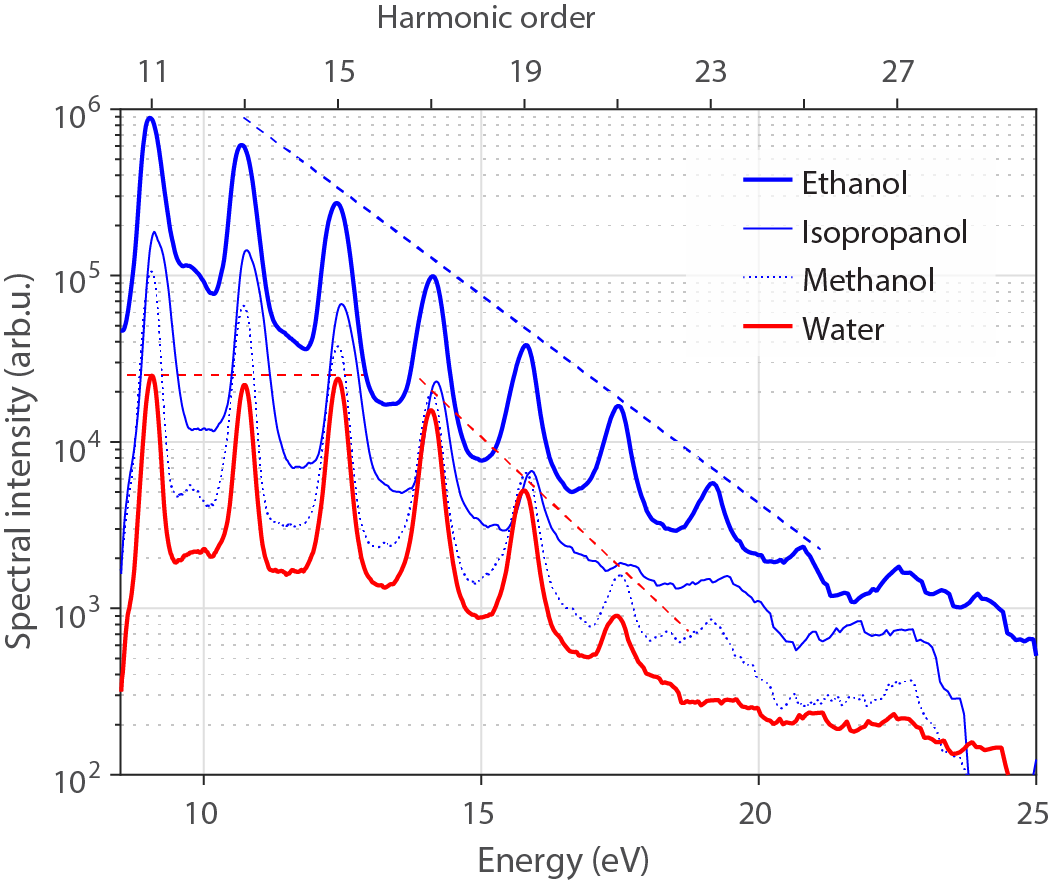Generation of coherent extreme ultraviolet radiation in liquids
Since the discovery of HHG 31 years ago, there have been numerous works investigating HHG from gases and solids. Liquids, in turn, combine advantages of gases and solids, which makes them an attractive medium for a new source of coherent extreme ultraviolet radiation. Early attempts to observe HHG from liquids were limited to micrometer--sized water droplets or restricted to the visible domain.
In our group, we revisit HHG from the bulk of liquids with a new experimental approach: the liquid flat--microjet method (see Fig. 1 below for experimental apparatus). The flat microjet provides an ultrathin (~ 1.9 µm), continuously renewed slab of liquid, which avoids the curvature of the interface inherent to droplets and cylindrical microjets. These properties minimize the effect of reabsorption and phase mismatch, sample damage, as well as defocussing of the emitted harmonics, turning flat microjets into robust, reproducible and nearly flawless targets for HHG.

We have performed various measurements to study the intensity scaling effects, coherent properties of the emitted radiation, photon flux, and the effect of the nature of the liquid on the HHG whose results are shown below (Fig. 2).

The advent of coherent EUV generation from liquids opens a new paradigm in which attosecond technologies can be brought directly to the bulk of liquids. Our work will hopefully pave the way to studies of femtosecond/attosecond electron scattering dynamics in liquids.
Original article:
“Extreme-ultraviolet high-harmonic generation in liquids”
T. T. Luu*, Z. Yin*, A. Jain, T. Gaumnitz, Y. Pertot, J. Ma, and H. J. Woerner.
Nature Communications 9, 3723 (2018)
DOI: external page 10.1038/s41467-018-06040-4